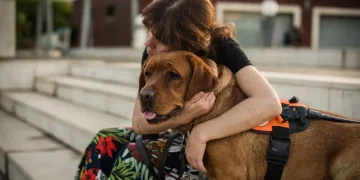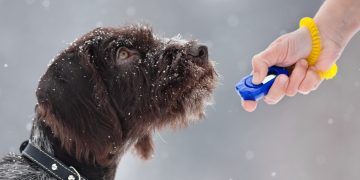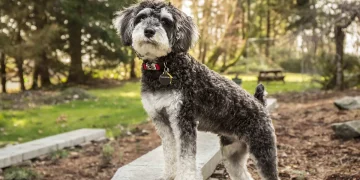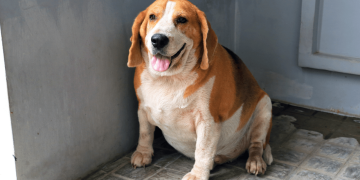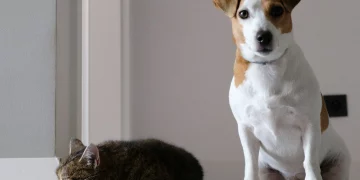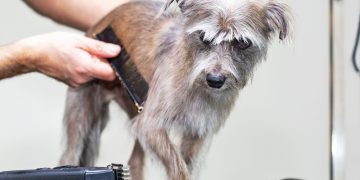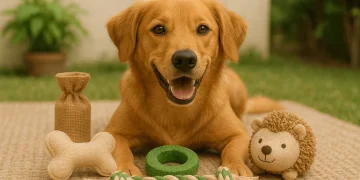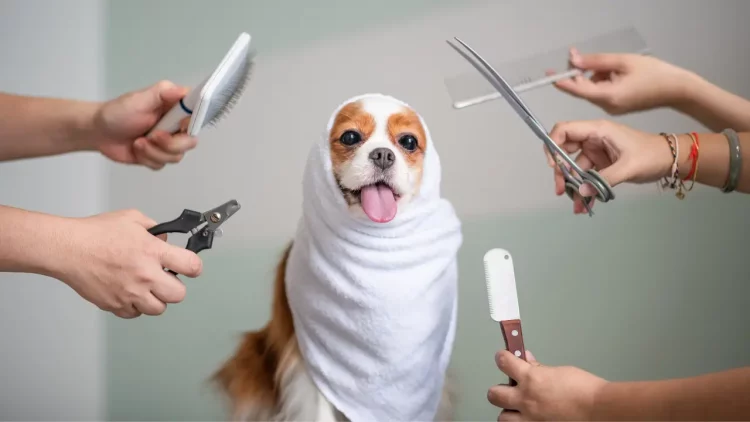Pet grooming is an essential part of maintaining your pet’s health, hygiene, and overall well-being. Whether it’s brushing, nail trimming, bathing, or haircuts, regular grooming can keep your pet clean and comfortable. However, for many pets, especially those who are not accustomed to grooming, the process can lead to stress and anxiety. Some pets may even become fearful of grooming sessions due to past negative experiences or general anxiety.
As a pet owner or groomer, it is important to approach grooming with patience, care, and attention to ensure that the process is not only effective but also as stress-free and comfortable as possible for your pet. In this article, we’ll explore strategies to avoid causing anxiety or discomfort during grooming and how to create a positive grooming experience for your pet.
Why Do Pets Experience Anxiety During Grooming?
Before discussing ways to prevent anxiety, it’s important to understand why pets may feel anxious during grooming sessions. There are several reasons why grooming can be stressful for pets:
1. Unfamiliar Sounds and Sensations
The sound of clippers, brushes, or water can be startling to pets, especially if they are not accustomed to them. The sensations of being handled or having certain areas of their bodies touched (like their paws or face) can also cause discomfort or anxiety.
2. Negative Past Experiences
Pets who have had previous bad experiences with grooming, whether from past trauma or improper handling, may associate the grooming process with fear. This can lead to heightened stress, even if the situation is completely safe.
3. Lack of Control
Some pets, especially cats and dogs with independent personalities, may feel trapped or restrained during grooming. Being held in one position for an extended period can lead to frustration and anxiety, particularly if they are unable to move freely.
4. Physical Discomfort
If grooming is not done properly or the tools used are too harsh, pets may experience pain or discomfort. For example, a brush that is too rough or a clipper blade that is too hot may cause your pet physical discomfort, making them associate grooming with pain.
5. Overstimulation
Pets can become overstimulated if grooming sessions go on for too long. Repeatedly touching or handling sensitive areas (like the ears or face) can be overwhelming for your pet, leading to signs of stress or even aggression.
Strategies to Reduce Anxiety and Discomfort During Grooming
Now that we understand why pets may experience anxiety during grooming, let’s explore effective strategies to minimize stress and ensure that your pet feels comfortable and secure during the process.
1. Start Slowly and Gradually Build Trust
If your pet is new to grooming or shows signs of anxiety, it’s important to ease them into the process. Start by introducing them to the grooming tools in a calm, non-threatening way. Let them sniff the brush or comb, and reward them with treats and praise when they show curiosity or calmness.
- Break Grooming Into Short Sessions: Start with very short grooming sessions, such as brushing for 5-10 minutes at a time. Gradually increase the length as your pet becomes more comfortable. This way, they don’t feel overwhelmed or trapped in a long grooming session.
- Positive Reinforcement: After each successful grooming session, reward your pet with treats, playtime, or affection. This helps your pet associate grooming with positive experiences.
2. Use Calming Techniques Before Grooming
Calming your pet before starting a grooming session can help reduce stress and anxiety. Here are a few strategies you can try:
- Calming Products: There are a variety of calming sprays, collars, and diffusers designed to reduce anxiety in pets. These products often contain ingredients like lavender or pheromones that help to soothe and relax your pet.
- Calming Music: Playing soft, calming music or white noise can help create a peaceful atmosphere and reduce the stress your pet may feel during grooming.
- Exercise Before Grooming: If your pet is particularly energetic, try engaging in a short play session or walk before grooming. This can help burn off excess energy and make your pet more relaxed during the grooming process.
3. Use the Right Tools and Techniques
The tools you use and how you handle your pet during grooming play a huge role in ensuring their comfort. Using the proper grooming tools and techniques can make the experience far less stressful for your pet.
- Gentle Brushes: Use a brush with soft bristles that is suitable for your pet’s coat type. A gentle brush will help prevent tugging or pulling on the fur, which can cause discomfort. Avoid using too many different tools at once, as it can overwhelm your pet.
- Clippers and Scissors: If using clippers or scissors, make sure they are quiet and not too hot. Some pets are afraid of the sound of clippers, so choosing a quieter model can help reduce anxiety.
- Paw and Nail Care: Be gentle when trimming your pet’s nails, especially if they are not accustomed to having their paws handled. If you’re nervous about cutting nails, consider asking a professional groomer or vet to do it, at least until your pet is comfortable with it.
- Avoid Overheating: Never use heated tools or excessive force on your pet’s skin. Overheating or tugging at the fur can cause discomfort, making the grooming experience unpleasant for your pet.
4. Provide Comfort and Reassurance
Pets feel more at ease when they are in a comfortable and reassuring environment. During grooming sessions, make sure your pet feels safe, calm, and secure.
- Choose a Calm Environment: Groom your pet in a quiet, familiar space where they feel comfortable. Avoid grooming in loud or busy environments that could overwhelm your pet. A calm, private space will help them stay relaxed.
- Use Gentle Handling: Always handle your pet gently and confidently. Forcing your pet into an uncomfortable position or being too rough with them can cause stress. Keep a calm, soothing voice and avoid sudden movements.
- Comforting Touch: Gently petting or talking to your pet throughout the grooming session can offer them comfort and help keep them calm.
5. Give Your Pet Control When Possible
Some pets experience anxiety simply because they feel trapped or restrained. Allowing your pet to have a little control over the situation can help reduce stress and anxiety.
- Allow Movement: Whenever possible, let your pet move around during grooming. If they are comfortable with it, allow them to change positions during the session. This gives them a sense of control and can help them feel more secure.
- Use a Grooming Table or Pet Harness: If your pet is particularly wiggly or anxious, using a grooming table with a non-restrictive harness can help keep them still without making them feel trapped. Ensure the harness is comfortable and does not restrict their movement too much.
6. Don’t Rush the Process
Rushing through a grooming session can cause your pet to feel stressed and anxious. Take your time and go at a pace that suits your pet’s needs.
- Break the Grooming into Stages: If your pet is anxious, consider breaking the grooming process into smaller stages. For example, you can brush your pet on one day, trim nails the next, and bathe them later. This prevents overwhelming your pet with too much at once.
- End on a Positive Note: Always try to end grooming sessions with something your pet enjoys, such as a favorite treat, toy, or cuddle. This creates a positive association with grooming and can help alleviate anxiety for future sessions.

Recognizing When Grooming Is Too Much
Even with the best techniques, some pets may still become too anxious or stressed during grooming. It’s important to recognize the signs that your pet is overwhelmed or uncomfortable. If you notice any of the following, stop the grooming session and give your pet a break:
- Panting or Drooling: Excessive panting or drooling can indicate stress or discomfort.
- Growling or Hissing: Aggressive behaviors, such as growling, hissing, or swatting, can indicate that your pet is feeling threatened or stressed.
- Trying to Escape: If your pet is trying to escape, it’s a sign that they are not comfortable and may need a break.
- Tight Body Language: Watch for signs of tension in your pet’s body, such as a stiff posture or tail tucked tightly against their body. This may indicate fear or anxiety.
If your pet becomes too stressed or aggressive, try to calm them down by giving them some space, and consider seeking professional help from a groomer or vet.
Conclusion
Grooming is an important part of caring for your pet, but it can also be a source of anxiety and discomfort if not approached correctly. By using the right techniques, tools, and environment, you can minimize stress and help your pet enjoy the grooming process. Take things slowly, use positive reinforcement, and always listen to your pet’s needs. Over time, grooming can become a pleasant experience that not only improves your pet’s health but also strengthens the bond between you and your furry friend.




